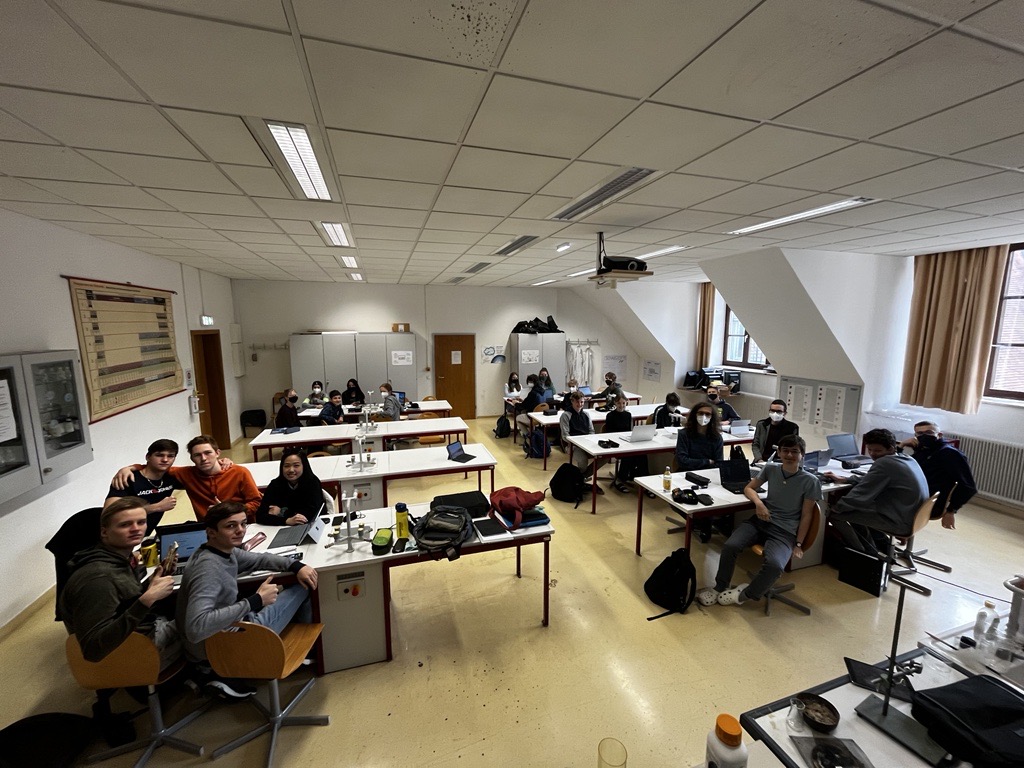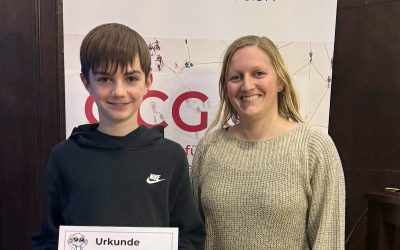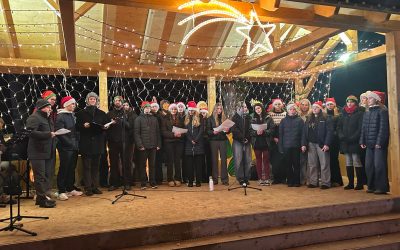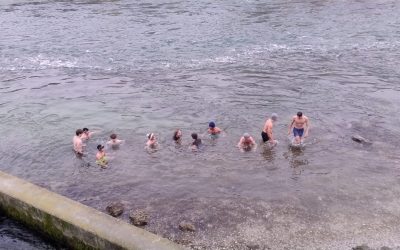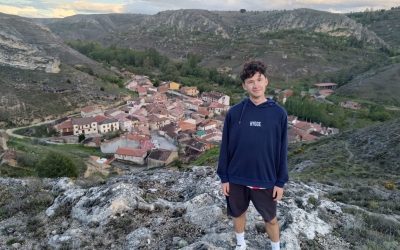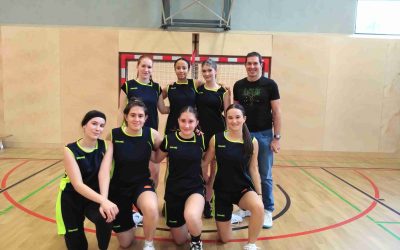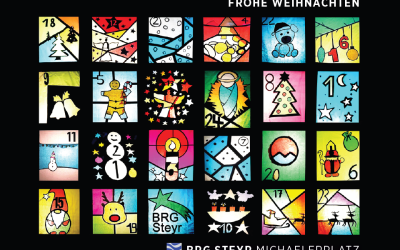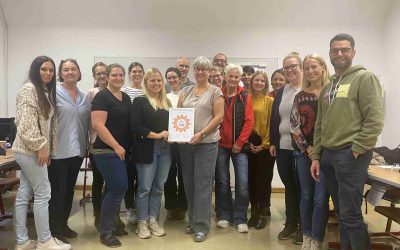During the Corona pandemic, everything is different. Different from how we are used that it is. Students have to wear a face mask on the corridor, they have to disinfect their hands before using beakers and pipets, and they have to try to keep as much distance as possible. And that is why the NABOJ mathematics team competition couldn’t take place in Linz (where it is carried out traditionally) but had to be held in each of the participating schools on Friday, March 18th, 2022.
As the competition was considered to start at 10 o’clock, the selected students, most of them participants of the Mathematics Olympics course, met up in the Chemistry room at the beginning of third lesson in order to prepare their workplace for the following 120 minutes (due to the quantity of tasks that had to be solved, it felt like a few minutes for many contestants) of puzzling and cramming. As a result of the Corona pandemic and to enable each of the attendees having the same conditions, the usage of all technical tools that are available (e.g. GeoGebra, Wolfram Mathematica – and of course a calculator) was allowed.
After a few minutes of switching on the laptops, connecting to the web interface and agreeing on team-internal rules (for instance splitting the exercises among the team members), we took a group photo that is attached at the end of the article. In addition, we impatiently kept in view the virtual countdown that depicted the start of the competition.
Some facts about NABOJ that are worth to know:
In contrast to many other competitions, talking to other contestants is not only permitted, but even desired as the tasks have to be solved in a team which consists of five members that have approximately the same age. Normally, the exercises are handed out on paper, but due to the current situation, they were displayed on the laptops (and tablets) of the participants. At the beginning, six rather simple problems were released (as it is an international competition, there were different languages to choose between), and each time a team entered a correct result (that was always a number (from a fraction of one up to a few thousand including three digits after the decimal point – so, guessing was hardly possible)), another one appeared. That means that in order to get another task, at least one of the displayed exercises had to be solved. Unfortunately, if a team entered a wrong answer, entering another attempt was locked for a specific time whose amount increased during the competition. Merely in the last five minutes before the interface closed, guesses were accepted by the server every ten seconds. Moreover, the supervising teachers (Mr. Ritt, Mrs. Vrecun, Mrs. Minderock, Mr. Wurm) and the teams themselves could have a look at the current countrywide rankings and motivate the participants to give their best.
For illustration, there is a sample task attached, its solutions can be found at the end of the article:
Problem 10: Marek and Lukas decided to challenge each other: If any of them submits a wrong answer to a Naboj problem with number n, he must do 10n push-ups. Naboj has 42 tasks. Marek looked only at problems with numbers divisible by 5 and Lukas worked only on problems with numbers having remainder 1 when divided by 5. Given that both of them submitted at least one wrong answer, no problem was answered incorrectly twice, and Marek did the same number of push-ups as Lukas, what is the minimum possible number of push-ups Marek could have done?
After waiting for about half an hour in the end, we luckily received the following Austria-wide results:
category Junior:
7. Junior team B: Auer-Nussbaumer Paul, Fellner Carolina, Kolb Moritz, Resch Elisabeth, Wartecker Tobias (5th and 6th grade)
56. Junior team C: Feichtinger Annika, Gruber Robert, Schmidinger Sarah, Schuller Johannes, Wimmer Hannah (all: 4th grade)
59. Junior team A: Hochstöger Florian, Jetzinger Anna, Mayrhofer Moritz, Schultes Kilian, Swoboda Nora (all: 5th grade)
category Senior:
8. Senior team B: Himmelbauer Michael, Kovacs Oliver, Leitinger Elias, Nowitzki Florian, Untersperger Jonas (all: 7th grade)
23. Senior team A: Blaimauer Daniel, Hong Cheny, Köck Nikolas, Mittermayr Julian, Pühringer Franz (all: 8th grade)
(sources: https://math.naboj.org/archive/results.php?year=2022&category=jun&country_code=at, https://math.naboj.org/archive/results.php?year=2022&category=sen&country_code=at)
In representation for the people involved into the contest, I would like to congratulate all participants on their exceptional and outstanding results, especially when taking into consideration that most of them hadn’t had any time for getting to know their teammates before!
Although everything is different, you should keep promises you give, and that is why the solutions to the sample task can be found below:
Since Marek solves only problems whose number is divisible by 5, the number of push-ups each of them did is divisible by 50. As Lukas solved only problems with numbers that have remainder 1 when divided by 5, he must have done at least 5 wrong submissions to obtain a number of push-ups divisible by 50.
Assuming that Lukas submitted wrong answers for problems 1, 6, 11, 16 and 21 and Marek’s wrong submissions were 10, 20 and 25, each of them had done 550 push-ups and. Since 1, 6, 11, 16, and 21 is the 5-tuple of problems solved by Lukas with the least possible sum of problem numbers, 550 is the minimum of push-ups Marek has done.
written by Michael Himmelbauer
fotocredit: © by Prof. Patrick Ritt
sample task: © by NABOJ 2022
